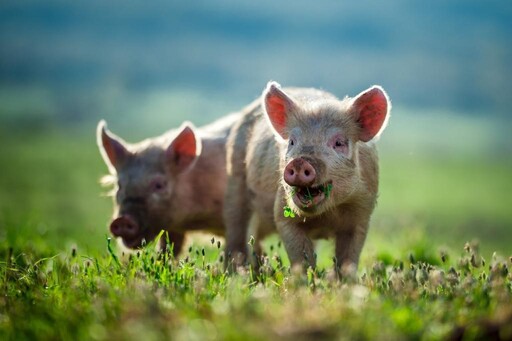A billionaire emits a million times more greenhouse gases: Oxfam

Why in news?
- Recently, a report titled “Carbon Billionaires: The investment emissions of the world’s richest people” was released by non-profit group Oxfam.
Details:
- The investments of 125 of the world’s richest billionaires yield an annual average of three million tonnes of carbon dioxide emissions a year, more than a million times the average for someone in the bottom 90 per cent of humanity.
How world’s richest billionaires emit more CO2 in a year?
- These super rich people have a collective $2.4 trillion stake in 183 companies.
- Their investments in polluting industries such as fossil fuels and cement are double the average for the Standard and Poor group of 500 companies.
- Cumulatively, these 125 billionaires fund 393 million tonnes of CO2e (carbon dioxide equivalent) per year, which is equal to the annual carbon emissions of France, a nation of 67 million people.
- To put things into perspective, each of these billionaires would have to circumnavigate the world almost 16 million times in a private jet to create the same emissions.
Concerns:
- It would take 1.8 million cows to emit the same levels of CO2e as each of the 125 billionaires. Almost four million people would have to go vegan to offset the emissions of each of the billionaires.
- Often the high-profile commitments made by corporates do not stand up to scrutiny.
- The flurry of net zero goals that depend on offsetting are at best a distraction from the need to take short-term measures to reduce corporates’ emissions and have the potential to derail climate action.
- In 2021, Oxfam revealed that using land alone to remove the world’s carbon emissions to achieve ‘net zero’ by 2050 would require at least 1.6 billion hectares of new forests, an area equivalent to five times the size of India.
Way Forward:
- Oxfam estimated that a wealth tax on the world’s super-rich could raise $1.4 trillion a year, vital resources that could help developing countries to adapt, address loss and damage and carry out a just transition to renewable energy.
Genetically modified pig heart took longer than usual to beat for human receiver: Scientists
(GS Paper 3, Science and Tech)
Why in news?
- The genetically modified pig heart took longer to generate a heartbeat than hearts of pigs or humans usually do, recently researchers have said.
- Xenotransplantation is the process of transplanting organs from one species to another.
Pig-to-human heart transplant in 2022:
- The man received the first-ever transplant of the gene-edited pig heart in a surgery in January 2022.
- The 57-year-old recipient lived for 61 days after the transplant in January.
- The changes in the transplanted pig heart slowed the electric signal from the top of the heart to the bottom.

Electrocardiogram (ECG):
- Electric stimulus originates in a specific part of the heart muscle called the sinus node. From there, it travels in a particular path to the heart’s lower chambers and across the bottom chambers to complete a heartbeat cycle.
- These electric signals power the contraction and relaxation of the heart, enabling blood pumping.
- The researchers used an electrocardiogram (ECG) to record the electrical signals from the heart. They collected ECG data of the patient, usually once in a day post-transplantation.
ECG parameters after Xenotransplantation:
- The research team found that the ECG parameters of the pig heart after being transplanted into a human were different from native pig hearts.
- Instead, the transplanted pig heart’s ECG parameters were extended than that of a human heart, in which electric signals travel even slower.
- The ECG parameters often extended beyond what was considered normal in a human heart. In humans, longer ECG parameters signal heart diseases.
Why unusual behavior?
- They suspect the missing connection between the pig’s heart and the body could be at play. Consequently, the pig’s body is deprived of inputs from the brain.
- Another reason could be that the patient was on certain medications to prevent rejection or infections. Some of those medications are very novel and very little is known about their potential effects on the ECG criteria.
- Further, the researchers do not think abnormal ECG parameters led to the patient’s demise.
What’s next?
- It will be extremely interesting to understand the factors that affect the changes in the parameters.
- Further analysis of the electrocardiogram may also provide unique insights.
Incidents of Naxal violence reduced by 55% over 8 years: MHA report
(GS Paper 3, Internal Security)
Why in news?
- Recently, the Union Home Ministry has said resolute implementation of the national policy and action plan led to a 55 per cent reduction in violent incidents perpetrated by the Naxals and 63 per cent in deaths over a period of eight years.
Details:
- According to the annual report 2021-22 of the Ministry of Home Affairs, there has been an overall 55 per cent reduction in violent incidents (from 1,136 to 509) and 63 per cent reduction (397 to 147) in Left Wing Extremism (LWE) related deaths in 2021 as compared to 2013.
- In comparison to 2020, the year 2021 saw a decline of 24 per cent (665 to 509) in incidents of violence and 20 per cent (183 to 147) in the resultant deaths.

Declining trend:
- The last seven years have seen a significant decline in LWE violence as well as its geographical spread. The declining trend which started in 2011 continues in 2021 as well.
- At the same time, the developmental outreach by the government of India has seen an increasingly large number of LWE cadres shunning the path of violence and returning to the mainstream.
- Owing to the improved LWE scenario, the list of LWE affected districts has been revised twice in the last three years. The number of LWE affected districts was reduced to 90 in April 2018 and then to 70 in July 2021.
- In 2021, Chhattisgarh (255 incidents and 101 deaths) remains the worst affected state followed by Jharkhand (130 incidents and 26 deaths), Odisha (32 incidents and three deaths), Maharashtra (31 incidents and six deaths) and Bihar (26 incidents and seven deaths).
CPI (Maoist):
- The CPI (Maoist) continues to be the most potent among the various LWE outfits in the country and accounted for more than 90 per cent of total LWE violent incidents and 95 per cent of resultant deaths.
- Amid increasing reverses, the CPI (Maoist) has been making efforts to expand to new areas along inter-state borders without any significant success.
Strategy:
- The arc of violence has been considerably restricted with just 25 districts accounting for 90 per cent of the LWE violence.
- The overall improvement in LWE scenario can be attributed to greater presence and increased capacity of the security forces across the LWE affected states, better operational strategy and better monitoring of development schemes in affected areas.
Testing, evaluation facility for sonar systems for Navy launched by DRDO
(GS Paper 3, Science and Tech)
Why in news?
- Recently, a testing and evaluation facility for sonar systems to be used by the Indian Navy has been launched by the Defence Research and Development Organisation.
- It is a state-of-the-art system developed for use by the Navy onboard various platforms, including ships, submarines and helicopters.
SPACE facility:

Uniqueness:
Way Forward:
- The design and construction of the platform meet all the statutory needs of Indian Register of Shipping and the vessel classifying authority and strictly adhere to the inspection and registration criteria as per Kerala Inland Vessel Rules.
- It will give impetus to the vision of 'Aatmanirbhar Bharat' and the 'Make in India' initiative.





